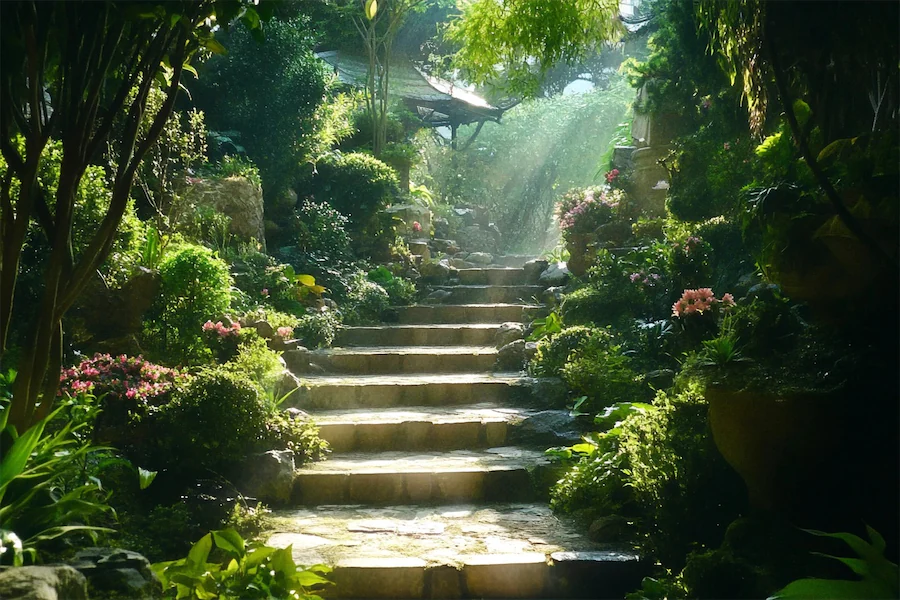A fantasy garden is a whimsical and imaginative outdoor space designed to evoke a sense of magic and wonder. By incorporating elements inspired by fairy tales, myths, and legends, these gardens transport visitors to enchanting realms, stimulating creativity and offering a delightful escape from the mundane.
History and Origins of Fantasy Gardens
The concept of fantasy gardens has evolved over time, drawing inspiration from various cultural narratives and artistic movements. Historically, gardens have been used to symbolize paradise or utopian ideals, as seen in the elaborate designs of Renaissance and Baroque periods. In contemporary settings, fantasy gardens often blend traditional gardening with imaginative themes to create immersive experiences. For instance, the Gardens of the Imagination in Terrasson-Lavilledieu, France, designed by Kathryn Gustafson and Ian Ritchie in 1996, use thirteen tableaux to present myths and legends related to the history of gardens.
Key Features of Fantasy Gardens
Fantasy gardens are characterized by several distinctive features:
- Thematic Elements: Incorporating motifs from folklore, literature, or fantasy genres, such as fairy houses, mythical creatures, or enchanted forests, to create a cohesive and immersive environment.
- Whimsical Structures: Utilizing unique architectural features like miniature castles, stone arches, or oversized mushrooms to enhance the magical ambiance.
- Lush Plantings: Selecting a diverse array of plants, including vibrant flowers, creeping vines, and mosses, to create a lush, otherworldly landscape.
- Interactive Spaces: Designing areas that invite exploration and engagement, such as winding pathways, hidden nooks, and secret gardens.
Applications of Fantasy Gardens
Fantasy gardens can be adapted to various settings:
- Residential Yards: Homeowners can transform parts of their gardens into magical retreats, providing imaginative play areas for children or serene escapes for adults.
- Public Parks: Incorporating fantasy-themed sections in parks can enhance community engagement, offering unique attractions that appeal to all ages.
- Botanical Gardens: Special exhibits or permanent installations featuring fantasy elements can educate and inspire visitors, highlighting the artistic potential of garden design.
Considerations When Designing a Fantasy Garden
When planning a fantasy garden, consider the following:
- Theme Selection: Choose a central theme that resonates with your interests, whether it’s based on a specific fairy tale, mythical world, or a general sense of enchantment.
- Scale and Proportion: Ensure that the size of decorative elements and plantings harmonize with the overall space to maintain balance and cohesion.
- Maintenance: Incorporate plants and materials that suit your climate and maintenance preferences to keep the garden looking its best with manageable effort.
- Safety: If the garden is intended for children, ensure that all features are safe and accessible, avoiding elements that could pose hazards.
Conclusion
Fantasy gardens offer a unique opportunity to blend horticulture with storytelling, creating spaces that captivate the imagination and provide a respite from everyday life. By thoughtfully integrating thematic elements, whimsical structures, and lush plantings, you can craft a magical haven that enchants all who enter.
